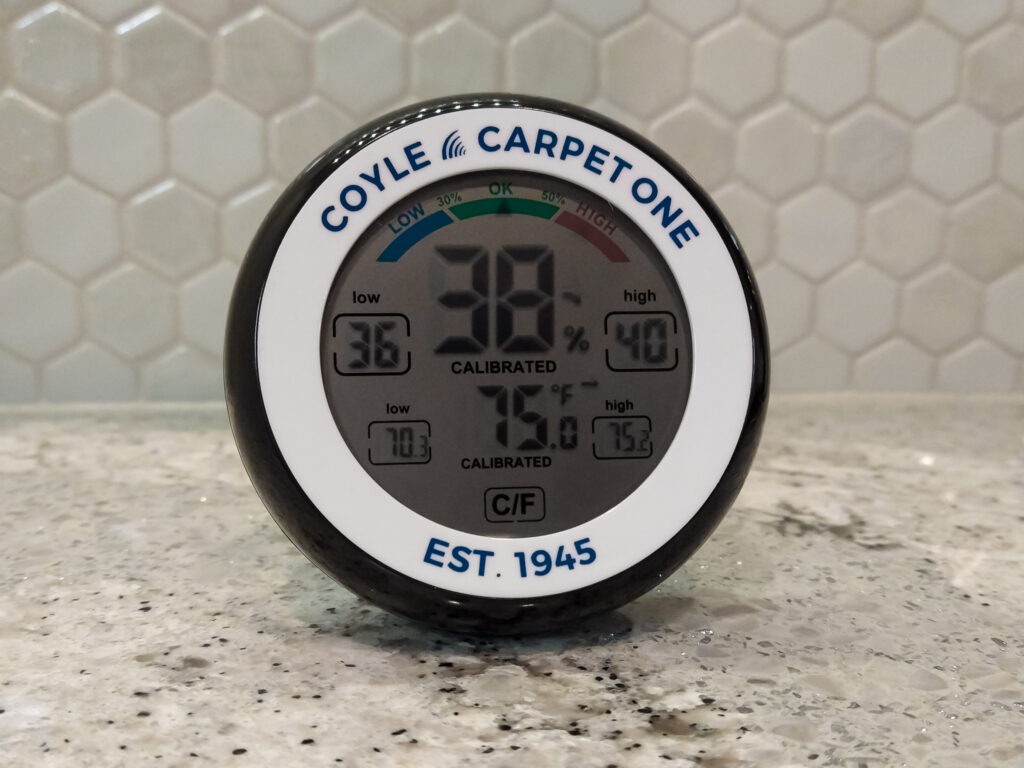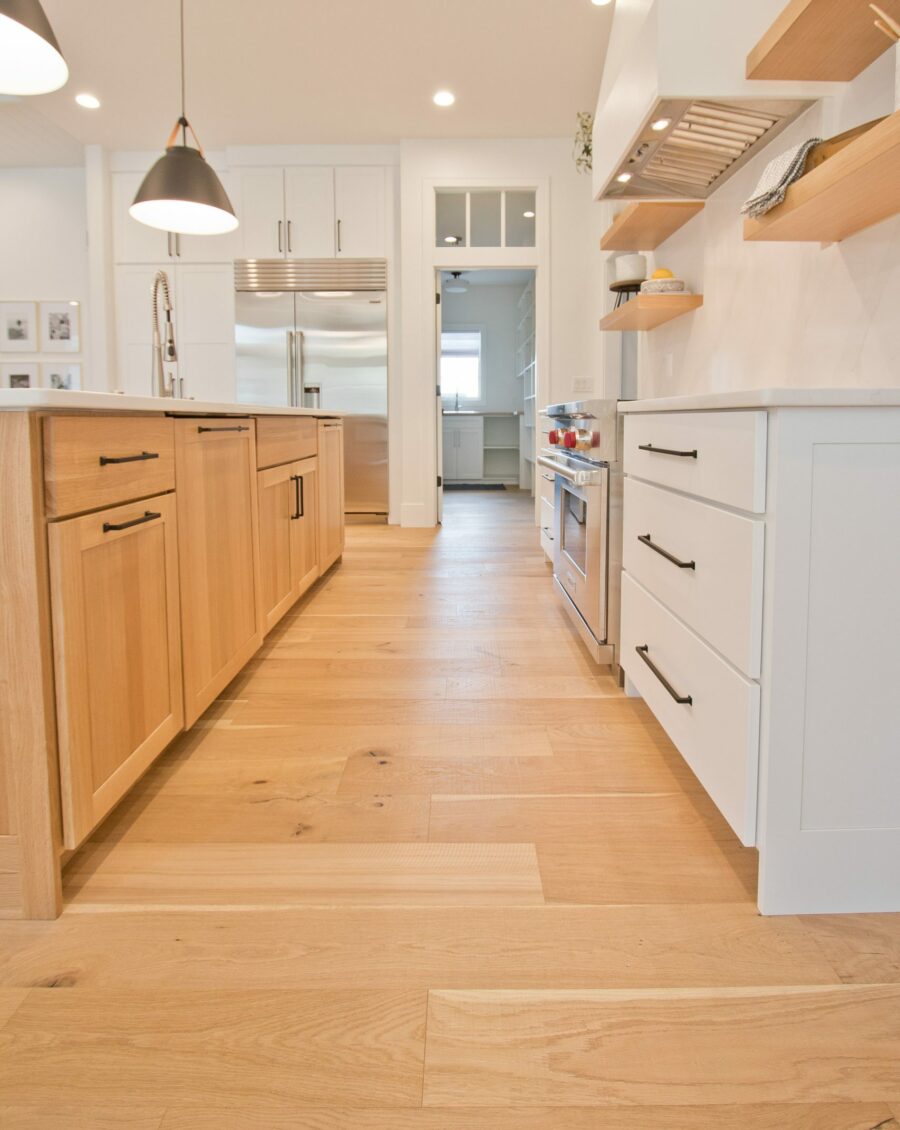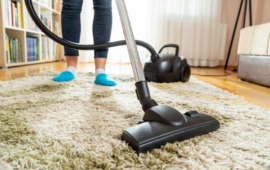One of the keys to ensuring the timeless beauty of wood floors is having a fundamental understanding of the relationship between humidity and wood floors.
Wood Floors & Humidity
As seasons change so do relative humidity levels within your home. Relative humidity (RH) tells us how much moisture is present in the air. Wood being a hygroscopic material means that it will swell and shrink as it absorbs and loses moisture from its environment. When RH levels fluctuate, wood floors will expand or contract resulting in cupping, end-lifing, or peaking of floorboards. Squeaky floors, splitting and cracking, and gaps between boards are also common.
Use A Hygrometer
To keep wood floors in your home looking their best, the relative humidity for a home in the Midwest should remain between a range of 30-50% and a temperature range of 60 – 80 degrees Fahrenheit. Year-round use of a hygrometer in your home is recommended to monitor RH levels.

Download our free Care & Maintenance Guide for Hardwood Floors.
Heating & Cooling
When air conditioning and heating systems are not used or completely shut down for an extended period of time, the performance of the home and the wood floor will be sacrificed. Wood floors will shrink or swell due to limited air movement and inconsistent humidity levels.
HVAC Systems
- During humid seasons, when the RH remains above 50%, dehumidification systems may be necessary. Air conditioning alone may not be enough to control RH levels within the home.
- During dry seasons, where the RH remains below 30%, supplemental humidification may be necessary for the home to sustain adequate RH levels.
Sub-Climates
Rooms or basements where HVAC vents are closed-off are not conditioned to the same temperature and RH levels as the rest of the interior space. This can result in sub-climates within the home and can have adverse effects on any adjoining floors within the home.
Moisture Generated Within A House
There are many different sources of moisture that can generate within a house that adds to the RH factor and will vary based on occupants’ lifestyle. As moisture releases within a home, it moves to other rooms through natural air movement or from the HVAC system.
- Mopping a 150 square-foot floor sets free four and a half pints of water into the air.
- A shower or bath adds ½ pint of moisture to your home’s air.
- Washing dishes can result in ½ pint of moisture released into the air of your home.
- Cooking or boiling water adds ½ pint of moisture into the air of your home.
- A family of four gives off ½ pint of water vapor per hour just breathing. This is why bedrooms are unexpected sources of moisture.
- Moisture can also be introduced into basements and crawl spaces from the mechanical systems within the house. This includes clothes dryer vents, condensed water from cooling systems, or discharge from automatic icemakers.




